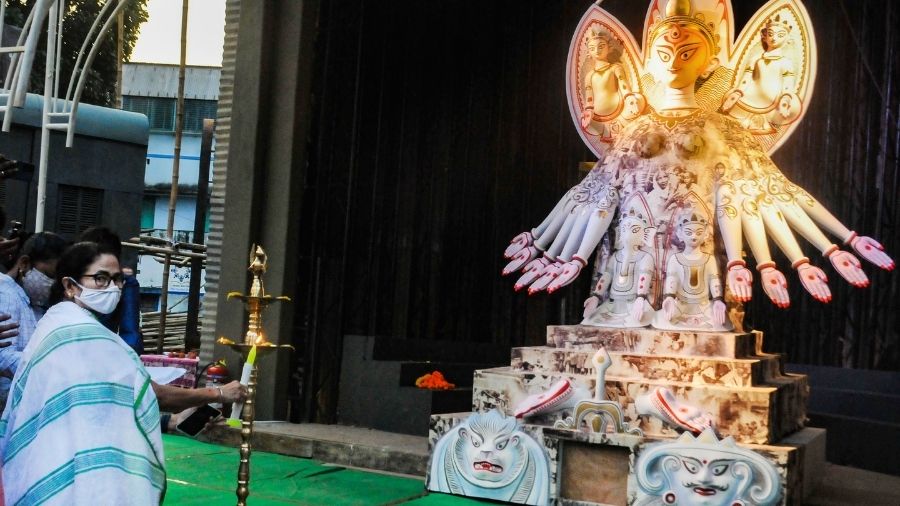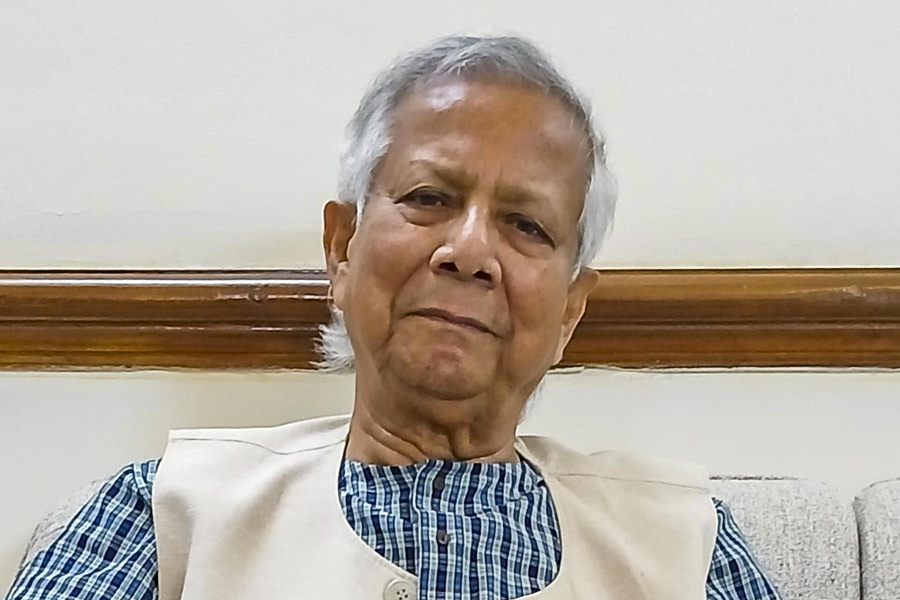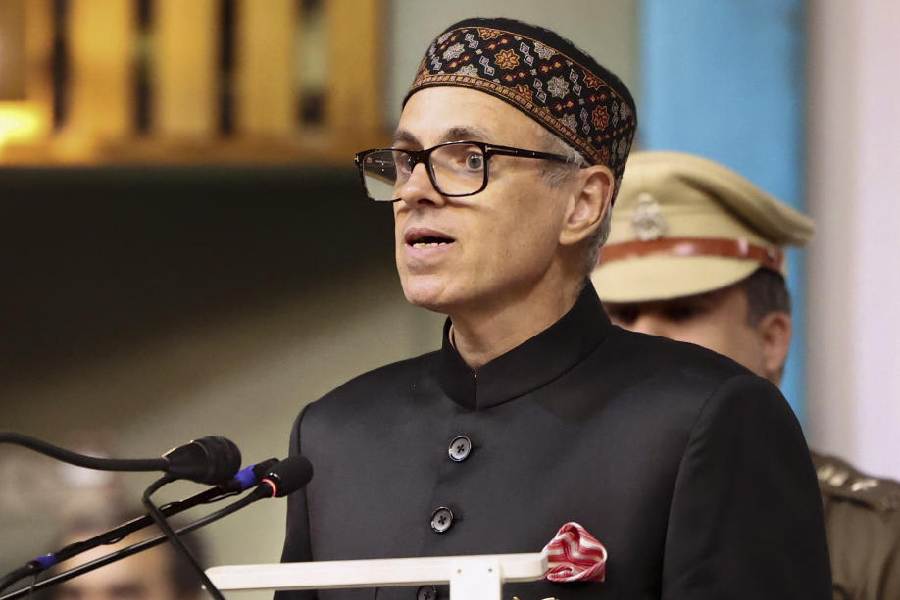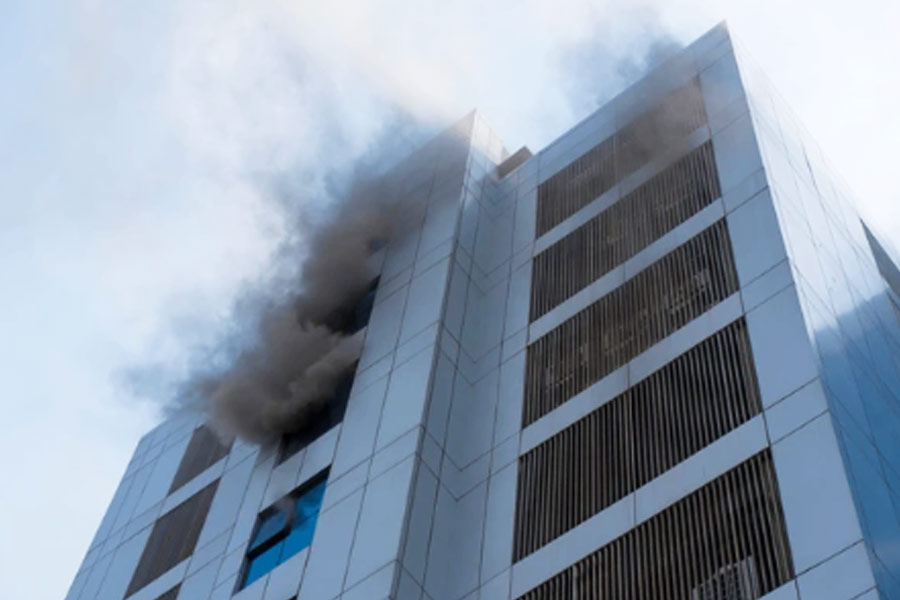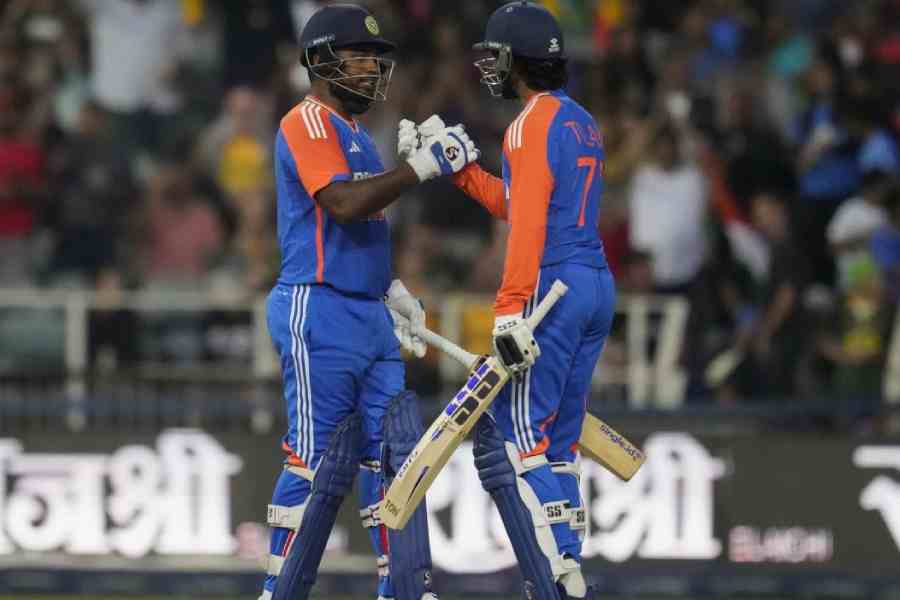Bengal’s favourite festival is growing at a rate of 9.61 per cent, higher than the growth rate of the state as announced recently by the Centre’s Niti Aayog despite the economic slowdown amidst a global pandemic.
The growth indicator came from figures released by the state-run power utility, West Bengal State Electricity Distribution Company Limited. "W. Bengal ranked no. 1 state by RBI on Net PerCapita Income Growth in 2020-2021. Bravo! WB’s growth + 7.16 per cent while India average – 3.99,” tweeted an ecstatic finance minister of Bengal Amit Mitra on October 1, days before festivities began in the state.
In the last fiscal, according to Niti Aayog CEO Amitabha Kant, only West Bengal, Tripura, Sikkim and Bihar have shown positive growth.
Compared to the previous year, 3,521 new Durga Puja venues were recorded in the state in 2021. WBSEDCL had in 2020 provided temporary power connections to 36,603 Puja pandals across the state, which in 2021 rose substantially to 40,124.
The Bengal government’s cash rollout of Rs 50,000 to each Durga Puja committee is believed to be one of the reasons behind the spike in the number of Puja organisers this year. Mamata Banerjee had announced a policy of giving cash to Durga Puja organisers which despite many a legal wrangling over past seasons has remained in the government’s budget allocation.
“Initially the scheme was for small clubs which could not raise the desired funds for the festival. Now it has been extended to all clubs. We expect the numbers will go up in the coming years as Rs 50,000 is guaranteed,” said a senior official in the power department.
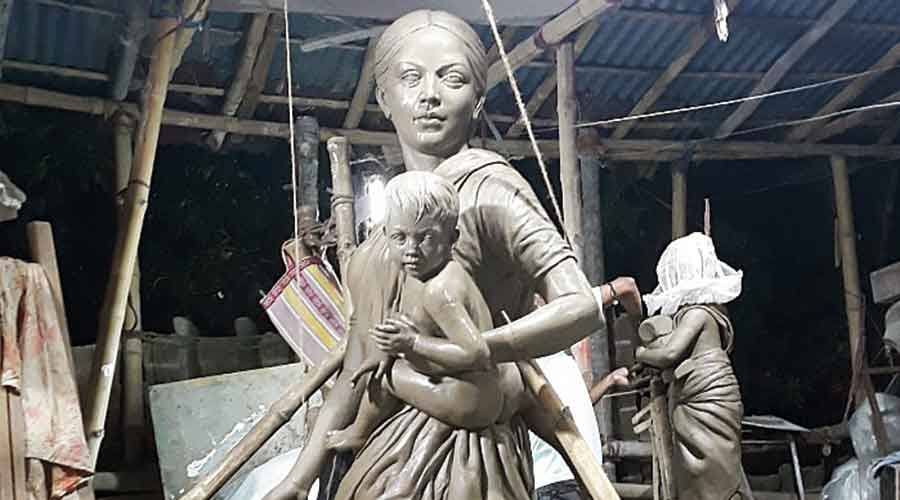
The idol of a migrant worker mother worshipped as Goddess Durga at Barisha Club in Behala this year File picture
Besides cash, free electricity is another incentive for the organisers, though they have to submit a security deposit. The state had this year raised Rs 9.36 crore as a security deposit.
“If that Rs 50,000 is seen as the capital, then investing that into organising the festival, the committee can raise funds through advertisements, renting space for stalls etc,” said an official.
Mamata’s policy of loosening the purse strings has helped her tighten the political grip across the state, the dividend that her party has reaped in successive state elections.“It is an easy way to get government money. Being associated with a religious festival nobody will raise any questions. There should be an audit to find out in which constituencies the number has increased significantly,” said a CPM leader.
In some districts like Murshidabad, which still has a Congress presence, organisers were allegedly discouraged from inviting party leaders to inaugurate Durga Puja in their constituencies.
Mamata’s insistence on cash transfers to beneficiaries is largely what John Maynard Keynes had famously advised in his Keynesian multiplier model: increased government spending during a recession year will eventually lead to more spending. This model was also advocated by several economists, including Nobel winner Abhijit Banerjee, during the early stages of the pandemic.
Most of the welfare schemes that the Bengal government is running are cash-based, which has helped beneficiaries mostly from the lowest economic strata stay afloat despite lack of jobs and employment opportunities.
A study commissioned by the tourism department pegs the total economic worth of creative industries at Rs 32,377 crore, about 2.58 per cent of Bengal’s GDP. This calculation was made before the pandemic and obviously excludes the additional 3,521 Durga Pujas that came up this year.

